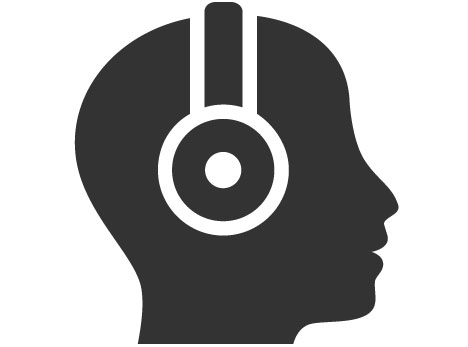
Approximately 1.3 million adults in the United States have guardians appointed to make decisions on their behalf. Guardianship—known as conservatorship in some states—is the legal process by which an individual assumes the role of decision maker for an adult with a disability through a court order. Guardianship is a powerful tool that significantly restricts a disabled person’s rights, autonomy, and ability to make important life decisions for themselves. Disabled adults under guardianship are often unable to access their finances or assets, live independently, choose to form relationships or get married, or voluntarily seek or refuse medical care. For that reason, alternatives should be explored and implemented before considering guardianship.
Families of children with intellectual or developmental disabilities are frequently advised to seek guardianship as their child is about to turn 18. Guardianship is often presented as the only option or natural “next step,” leaving many well-meaning families uninformed about other ways to support and care for their disabled adult family member, such as supported decision making.
Guardianship can be enacted at any time during a person’s life. As people age or acquire disabilities, it is not uncommon for families to request court-ordered guardianship. Sometimes a judge appoints a guardian who is not a member of a disabled person’s family. A legal guardian can even be a complete stranger who charges a fee to make important life decisions about someone they do not know or particularly care about.
It is also important to understand the potential impact of guardianship on quality of life for disabled people. Research has shown that people with disabilities who are under guardianship can experience a loss of self-esteem and independence and may be at greater risk of abuse and neglect.
A good starting point, rather than seeking guardianship, is to try supported decision making, which allows adults with disabilities to keep their legal rights and make their own decisions, with support from family, friends, and caregivers. Supported decision making can also include preparing for the future with the completion of an advance directive or living will. Here are some other alternatives to guardianship, which may restrict certain types of decision-making, but not all legal rights: arranging a durable Power of Attorney, assigning a Representative Payee, setting up a trust, and limiting bank account access.
The process and criteria for establishing a guardianship or conservatorship varies by jurisdiction, but it often requires medical or psychological evaluation to determine the disabled individual’s capacity. It is important to remember, medical professionals and court personnel are influenced by the same ableism that pervades our society, which teaches us to underestimate people with disabilities. Establishing guardianship can be a lengthy and invasive process for a disabled person and their family. In addition, the appointment of a guardian can be challenged in court by the person under guardianship or other interested parties, which can lead to legal battles that are both costly and emotionally taxing. Removing a person’s legal right to make their own decisions should be the last option, not the first. Adults with disabilities, families, and caregivers should be informed about all options and supported in making the best choice together. This approach not only protects the rights of people with disabilities, but also promotes their dignity and wellbeing.
![[Image description: Inverted pyramid chart titled “Alternatives to Guardianship,” with four sections. An arrow points up along the inverted pyramid, indicating that a person has “more rights” moving toward the top. An arrow points down along the inverted pyramid, indicating that a person has “less rights” moving toward the bottom. The sections from top to bottom are:
1) Green section with text overlay that says, “Self-Determination.”
2) Yellow section with text overlay that says, “Supported Decision Making.”
3) Orange section with text overlay that says, “Representative Payee” and “Power of Attorney.”
4) Red section with text overlay that says, “Court-Ordered Guardianship.”
Disability Network Southwest Michigan blue and orange logo in upper left corner of the image.
Attribution: Disability Network Southwest Michigan (2024).]](https://unitedforscmi.org/wp-content/uploads/2022/08/deb14.jpg)
[Image description: Inverted pyramid chart titled “Alternatives to Guardianship,” with four sections. An arrow points up along the inverted pyramid, indicating that a person has “more rights” moving toward the top. An arrow points down along the inverted pyramid, indicating that a person has “less rights” moving toward the bottom. The sections from top to bottom are:
1) Green section with text overlay that says, “Self-Determination.”
2) Yellow section with text overlay that says, “Supported Decision Making.”
3) Orange section with text overlay that says, “Representative Payee” and “Power of Attorney.”
4) Red section with text overlay that says, “Court-Ordered Guardianship.”
Disability Network Southwest Michigan blue and orange logo in upper left corner of the image. Attribution: Disability Network Southwest Michigan (2024).]

Read
- ACLU – Supported Decision Making & the Problems of Guardianship (La Toma de Decisiones con Apoyo en español)
- US Department of Justice – Guardianship: Less Restrictive Options
- Joe Leland, The New York Times – ‘I’m Petitioning … for the Return of My Life’
- o Content Note: Descriptions of physical violence and abuse of disabled people, financial abuse, physical restraint, and involuntary institutionalization.
- Emily DiMatteo, Vilissa Thompson, & Osub Ahmed, Center for American Progress – Rethinking Guardianship to Protect Disabled People’s Reproductive Rights
- o Content Note: Mentions nonconsensual relationships, isolation and abuse of disabled people, forced sterilization, restriction of and forced abortions.

Watch
- The Arc Michigan – Rethinking Guardianship / Supported Decision-Making (18:12, includes captions)
- Disability Rights Florida – Alternatives to Guardianship Explained (2:31, includes captions and transcript)
- National Disability Rights Network – Representative Payee Program (2:35, includes captions and transcript)

Listen
- ACLU, At Liberty Podcast – Why Britney Can’t Get Out of Her Conservatorship (32:15, includes transcript)
Content Note: Mentions forced labor, financial abuse and control, isolation, and denial of reproductive rights.
Discussion
- What are some of the potential negative consequences of guardianship for individuals with disabilities?
- Why is it important to explore and implement alternatives to guardianship?
- How can education and awareness about alternatives to guardianship improve the decision-making process for families and caregivers?
